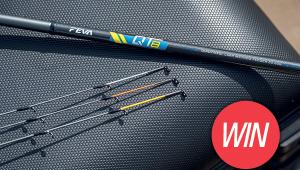Win With The Slider
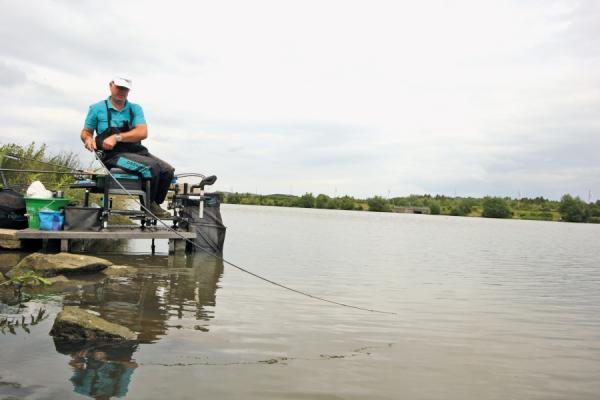
Alan Scotthorne On The Slider
There are few anglers better than Alan Scotthorne on the slider float, so here’s a masterclass at Chesterfield’s Poolsbrook Reservoir with the five-time world champ!
One method that always seems to arouse plenty of interest and discussion, yet you rarely see being used in England, is the slider. The single main reason why it is not widely fished is because feeder fishing is normally allowed too. You can fish a feeder effectively in almost any conditions you are faced with, whereas the slider takes a bit more effort.
One thing’s for sure, though, it’s something you have to master if you ever want to represent your country! The feeder is banned in most international events and that opens the door to this brilliant float-fishing tactic.
As you can imagine, I have spent countless hours mastering the art of slider fishing. It even helped me win two of my five World Championship gold medals; once in Croatia for a mixture of grass carp, catfish and skimmers and the second time in Hungary on Lake Valence for small skimmers at range, which are notoriously difficult to catch.
Get the basics right and it’s a great method and a really enjoyable way to fish. Hopefully, my advice and tips will convince you to give it a go!
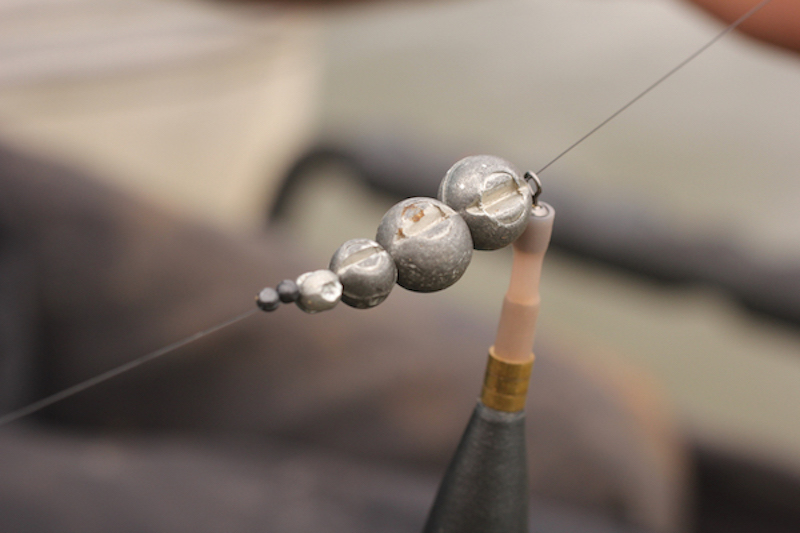
Alan uses a swivel float attachment to hold the float, and small bead to stop it sliding over its knot.
What Is A Slider?
First things first, I suppose I must clarify what a slider float actually is! As the name implies, it is a float that can slide freely up and down the line. A stop knot fixed somewhere above the float determines the actual depth you are fishing. This stop knot can travel through the rod rings freely, which allows you to cast out easily even when you are fishing a depth that is much deeper than the actual length of the rod.
There are other advantages to a slider setup. The fact that the float isn’t fixed means that when you strike you are doing it through the float not against it, and this creates much less resistance than if the float was fixed traditionally with locking shot either side. You, therefore hook fish and hit bites really cleanly.
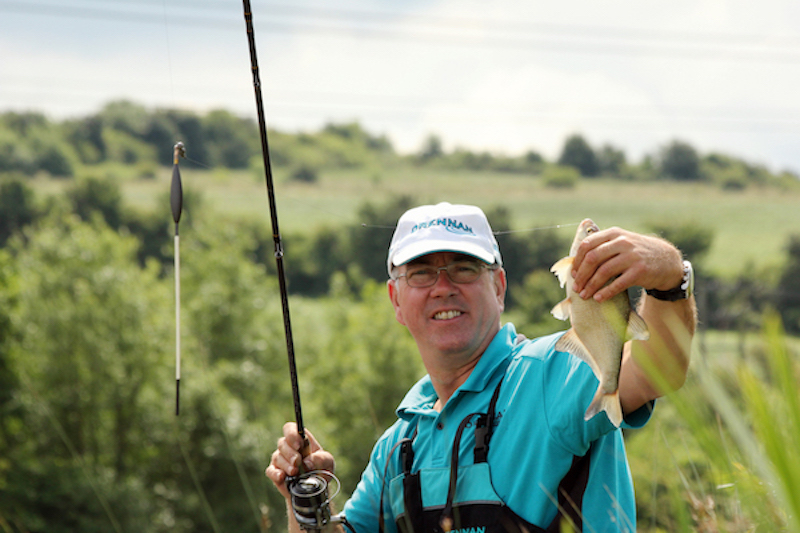
Skimmers that sit off the bottom in deep water are suckers for the slider!
The way a slider rig is set up also offers great presentation as you have a large bulk near the bottom for good stability; that really helps the rig stay steady and cut through crosswinds and skim.
I prefer to use 14ft rods with this method as well and they need to be slim, but with enough backbone to cast a big float and control the line. A Drennan 14ft Acolyte Plus is my choice, but I might swap to a softer 14ft Acolyte Ultra for very small skimmers. I must add that sometimes even if the depth is less than the length of the rod a slider setup can be better than a fixed waggler, for all the reasons I’ve just explained.
The Right Line
You can get into all sorts of tangles with the slider, especially if the wind is in your face, so you must keep things as simple as possible. The main line must be around 0.20mm or thicker. Any thinner and you will get tangles as it won’t create enough resistance to keep the float and bulk together on the cast.
I still use a now-discontinued, cheap brand called Shimano Nexave for the slider. I’ve used this for years as it has just the right properties. You don’t want a hi-tech floating line and you definitely don’t want a heavy, old-fashioned sinking mono that sinks too deep and drags the float towards you and is difficult to pick up on the strike. Somewhere in between the two is ideal.
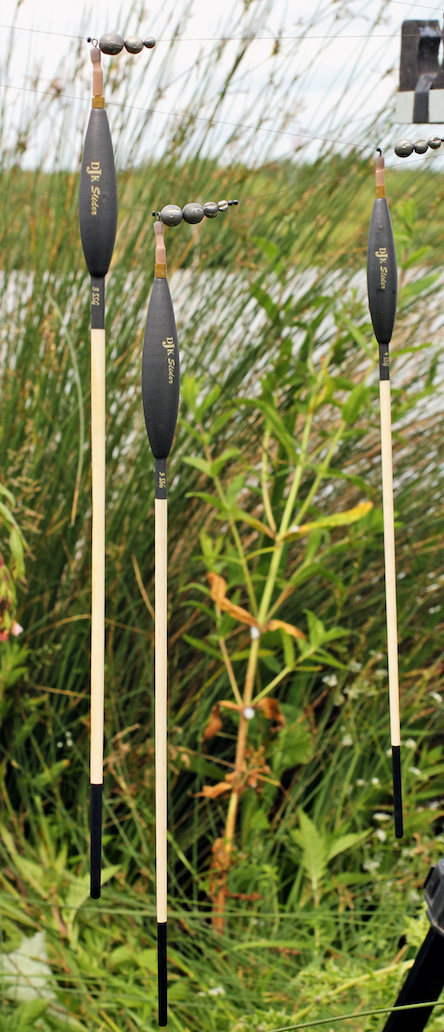
The new DJK sliders are semi-loaded, which helps the float sit on the bulk when cast.
Slider Floats
I generally use bodied peacock floats designed specifically for this game and the current ones I have are DJK Sliders. These come in 3SSG, 4SSG and 5SSG sizes (one SSG is approximately 1.6g). Importantly, these are semi-loaded by 1g to 1.5g. This also helps to keep the float and bulk together in the air. Any separation between them and you’ll get tangles.
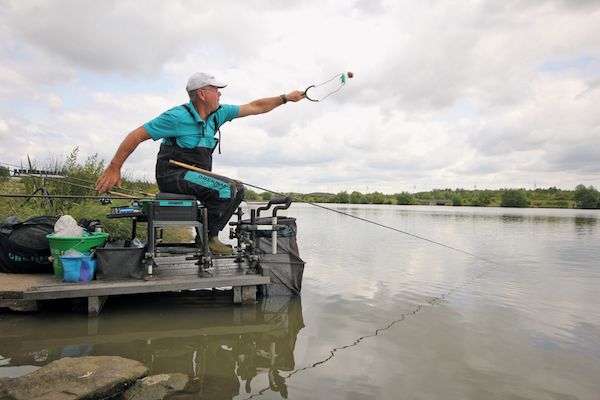
Alan feeds most of his initial bait without a float in the water, and then casts out before checking how accurate he is by firing a few more balls.
I also use a Drennan silicone Swivel Float Attachment. There was a time when I used to squash the eye of the swivel with pliers to help prevent the slider knot accidentally getting stuck. Now, though, I think you get a much smoother flow of line through the swivel if it’s left as it is. This works really well so long as you incorporate a tiny free-running glass bead between the swivel and the stop knot.
The Stop Knot
I create a stop knot with a simple four or five turn overhand knot. I like to use the exact same material and diameter as the actual main line. You must also leave the tag ends really long and mine are around three inches. Any shorter and you create a stiff bristle effect that impedes the travel of the stop knot through the rod rings.
One stop knot is usually fine, although I may very occasionally use two butted up to each other to ensure they don’t slip.
The Shotting
I always cast ‘off the bulk’, which means the slider sits directly against the main bulk when I cast. I use Anchor non-toxic shot rather than a big olivette or drilled bullets for this bulk; I prefer non-toxic shot even if lead shot is actually allowed (as it often is on the Continent) because it is kind to the line and I can easily remove a shot and squeeze it back on again. Lead tends to move, plus it’s more difficult to remove once it’s pinched on. More on this later…
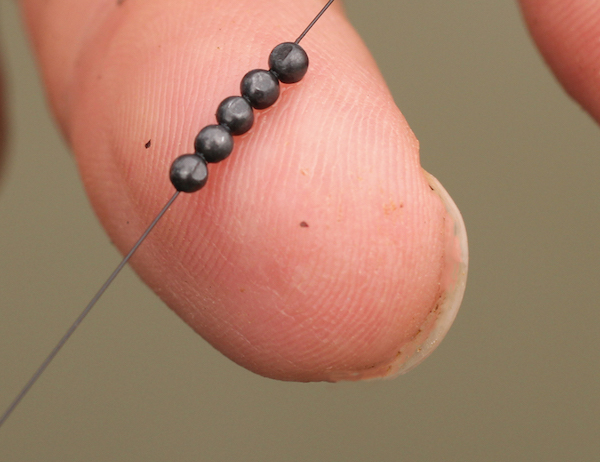
A small bulk of five No8s placed 50 centimetres below the main bulk helps reduce tangles.
All of my slider bulks are made up of three or four of these large Anchor shot. I never use any more than four shot, to avoid tangles, although very small ‘trimming shot’ to fine-tune things are acceptable. My main shot will typically be AAAs, SAs, SSGs or 2SSGs. I also taper them so that the largest shot are nearer the float. Ensure the shot are butted up tight against each other, as gaps can also lead to tangles.
About 50 centimetres further down the line I will have a second smaller bulk – typically five No8s – and then another 50 centimetres away I will tie a swivel, on to which I attach the hooklength. This hooklength will typically be 30 centimetres but it can be shorter or longer. I might also place one or two No8 shot next to the swivel if I need to create a more positive final ‘dropper shot’.
You’ll know if you have everything set up correctly as the float should fly straight as an arrow. If it waggles it means something is not quite right and you will invariably get some sort of tangle.
Hooklengths
I have three favourite hooks for this method. A Kamasan B560 is ideal for light to medium slider work, small skimmers and smallish baits, usually in a size 16. For more positive work I really like the Drennan Fine Maggot in a size 14. This pattern is actually only currently available overseas, but it is similar to a Kamasan B511 but bronze and very strong for its wire gauge. If barbless hooks are enforced then I use a Kamasan B911 F1 in sizes 16 and 14.
My hooklength is the ever-reliable Supplex Fluorocarbon in 0.10mm to 0.15mm diameters. This stuff is surprisingly strong in water and less susceptible to spin-ups on the retrieve than mono.
Plumbing Up The Scotthorne Way
Getting the depth right is something I pay really close attention to as it can make or break your session. It is perhaps not so critical for big bream as you can get away with laying a bit of line on the bottom and still see and hit bites.
Small skimmers, on the other hand, are notoriously difficult to catch and you simply must have everything set correctly to see and hit the bites. That often means having just a couple of inches of line on the bottom if conditions allow. Done right you’ll see the bites from both these shy-biting skimmers and bigger bream without trouble.
I have seen all sorts of techniques people use to plumb up a slider, sometimes with separate rods or special floats or plummets, but I am completely confident in the way that I choose to do it. Line can stretch and give you false readings, so I always plumb up with the actual rig that I am going to use to get things precise. The only way to be certain is to put your plummet on the actual hook you are going to be putting your bait on. Even if I have two or three rods, each one must also be plumbed up separately.
To plumb up I undershot my float by removing one of my main bulk shots and then attach a ¾oz plummet to the hook and cast out. This is why I use Anchor shot as I can remove it easily without damage. Undershotting the float like this helps to give a really positive plummet reading. The plummet is heavy enough to sink the float but if the float is too far overdepth half of it will stand proud of the water. By steadily reducing the depth I can then fine-tune things so that only the very tip of the float is visible, meaning the depth is now plumbed perfectly.
I then take the plummet off, re-squeeze the shot back on and mark the depth on my rod, just as I would with a pole setup.
From this starting point I can then go as far overdepth as I want and know exactly how far the rig is set. This could be just two inches on a still and calm day. If it’s really choppy and towing hard I can increase the depth accordingly and know exactly what’s happening. On extreme days I might even drag some shot on the bottom to help slow the rig down.
This plumbing technique obviously only works when the bottom is relatively flat, like most international-style venues I fish such as the big canals and rowing courses. If the bottom is sloping and you cannot find a flatter area then you have to compromise a bit and increase the depth to guarantee your bait is always on the bottom if your range is slightly out.
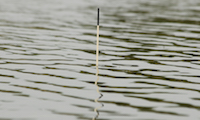
If this happens when plumbing up, you'll be fishing around 10in over depth
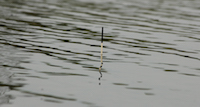
This would mean you're fishing around 3in over depth
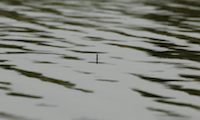
This is fishing dead depth!
What Mix?
Slider fishing goes hand in hand with catapulting groundbait as you are invariably fishing some distance out and in deep water. You need a fairly sticky mix to hold plenty of extra particles and to ensure the balls don’t break up in mid-air, but it still needs to break down quickly once it’s on the bottom.
Today I have used equal parts Sensas 3000 Gros Gardons Fine and 3000 Magic with a view to catching some big roach and tench, as well as skimmers. These were the main species I encountered the last time I visited this venue. However, that was much earlier in the year and now it has warmed up most of my fish have turned out to be good skimmers. My chosen mix is therefore a bit too soft and I feel this has encouraged the skimmers to rise off the bottom and I have had a number of fish on the drop.
If I came back again I would definitely incorporate some Sensas Terre de Somme (damp leam) into the mix. This is always a great addition for skimmers and bream and gives the mix greater weight to get the balls quickly to the bottom where the fish are easier to catch. I perhaps should have thought a bit more and brought some today – so an important lesson learnt!
In the mix I will add casters, dead maggots, maybe smaller dead pinkies and finely chopped worms; all good skimmer fodder. On an international event I would probably add joker to the mix, too.
Aim to create a decent carpet of groundbait on the bottom, over which you can catch the fish. Some days, however, you definitely don’t want to feed too many extra offerings, especially with smaller skimmers, as that can often lead to missed bites and foul-hooked fish.
Catty King
I use Drennan Softfeed Catys for all my feeding and have adapted them by shortening the elastic so that they fire out exactly the right distance. I measure them in the number of reel turns of a 4000-size reel, so mine are set to go 30, 40 or 50 reel turns. This can only be achieved with a bit of time and effort on the bank refining things, but is well worth the effort. It is probably one of my biggest edges as people always seem to be amazed how accurately I can feed.
I know that if I pick up my 40-turn catapult, so long as every ball I form is approximately the same size, when I pull back the pouch to full stretch it will fire a ball the same distance with extreme accuracy. Again, practice is key to getting those one-handed ‘sausages’ of groundbait as close as possible as each other. I bet if you weighed mine they would all be pretty close!
The reel’s line clip is also vital for the way I like to feed. I actually cast beyond the feed and hit my line clip so it is around three to five reel turns further out. This allows me to reel in three, four or five turns to sink the line adequately. Once the float is in position I often open the bail arm of my reel and pay out some line, just to let the bulk reach the bottom and settle everything properly. However, in shallower swims like today that is not always so necessary.
I remember when the European Championship was in Belgium a couple of years ago that I actually wanted to feed 25 sausages of groundbait at 40 turns by catapult at the start of the match. I fed the first 20 without even casting the float out to aim at. I was so confident that my catapult and ball size were perfect that there was no need to have a float to aim at.
After feeding those 20 balls I then picked my rod up and cast the float out to the line clip. I then fired out the 21st ball just short of the float and then counted the three or four turns it took to get to the float to this spot. I then fired out the remaining four balls I had made up, right on top of the float.
Feeding this confidently and accurately is something that obviously only comes with practice but it can be done if you work hard and spend some time to perfect. It’s very satisfying when you get it right!
Topping Up
Further top-ups are done according to bites and could be just one ball or more typically two or three balls at intervals. When bites slow that’s obviously the signal to feed. You might not catch instantly either, especially if it’s bigger bream you are targeting. Just have faith and these big fish will normally turn up at some stage on the session.
Today has been a typical slider session as things were slow to begin with after an initial 20 or so balls were fed. I waited a good hour before trying to top up and found a couple of balls every 10 to 15 minutes drew more fish into the peg.
I’ve also gone through the card with hook baits and half a dendra or two or three smaller redworms have definitely picked out the better skimmers among the smaller roach. On other days it might be dead maggots, a maggot and caster cocktail, three pinkies, or even a grain of sweetcorn. When better skimmers are the target, I always try to be patient before striking to allow the fish to properly take the bait.
It’s been great to flex the slider gear once again and really helped me prepare for the busy international schedule I’ve got this year. Get out there and give it a go yourself – you’ll soon realise that it’s a lot more fun than the feeder!
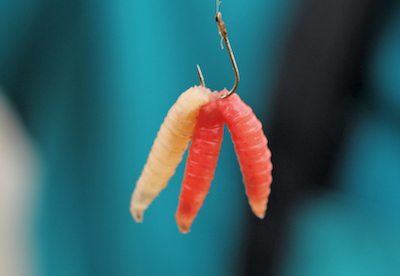
Two dead reds and a white - a stand-out bait!
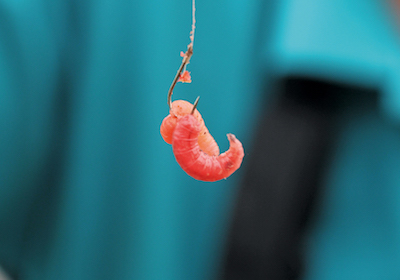
A live maggot and a pinkie - visible and great for small fish!
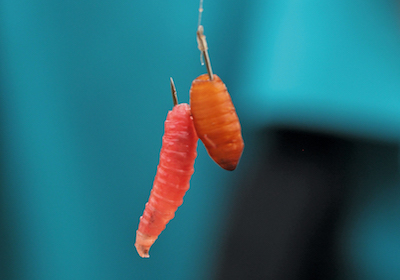
A caster and a dead red for selecting quality!
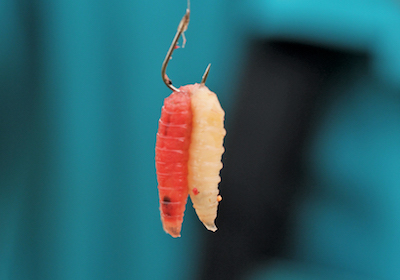
A dead red dead white - the banker bait!
- Log in or register to post comments










